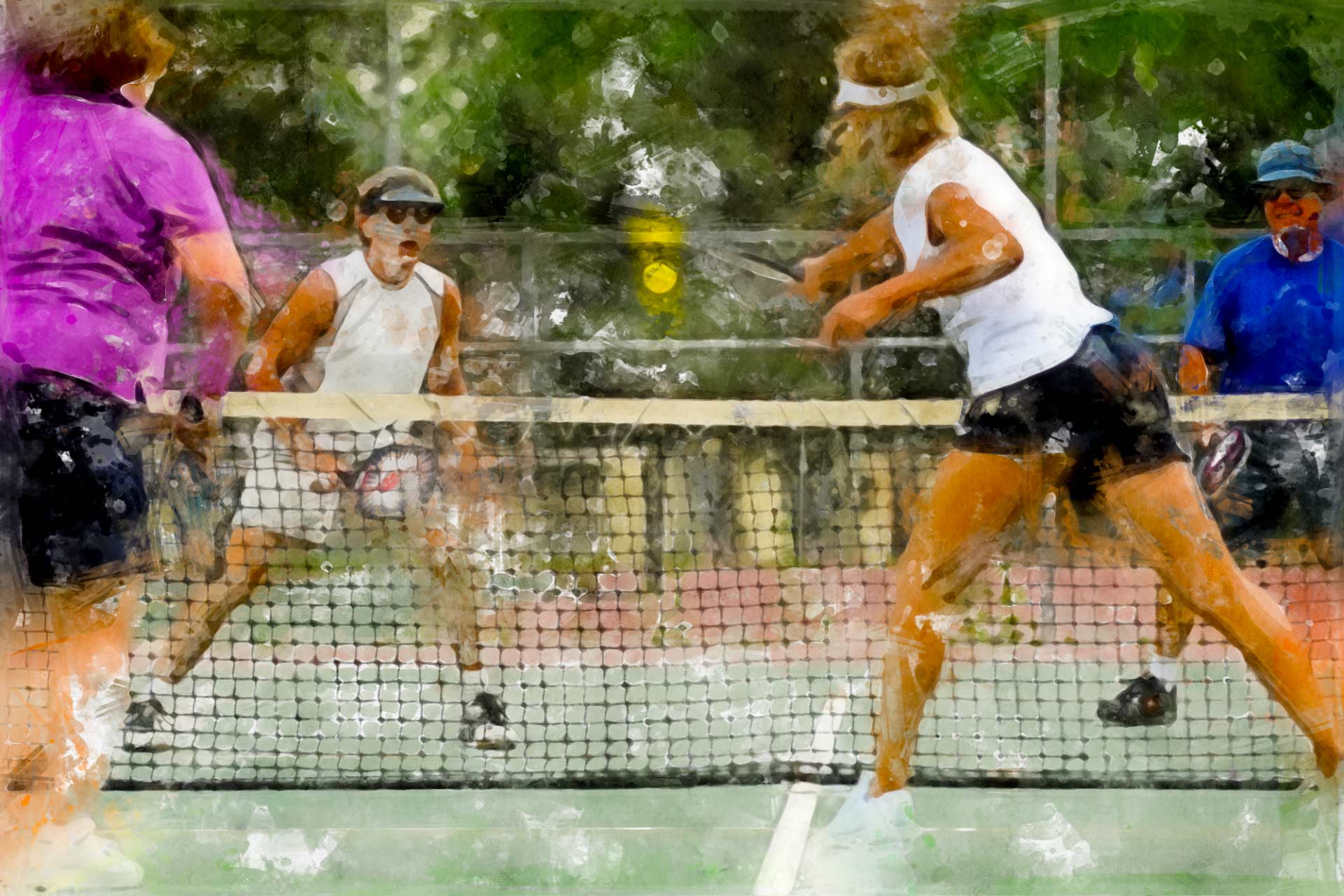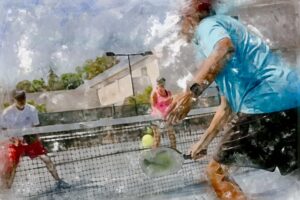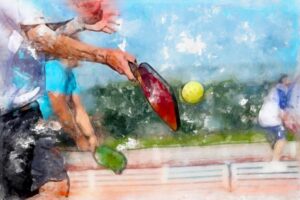Mastering the Approach to the Kitchen
Mastering the Approach:
When and How to Move to the Kitchen Line in Pickleball

Mastering the Approach: When and How to Move to the Kitchen Line in Pickleball
In pickleball, controlling the Non-Volley Zone (NVZ)—commonly referred to as “the kitchen”—is one of the most important strategies for winning points. At the NVZ line, you can cut off angles, apply pressure, and control the pace of the game. But getting to the kitchen at the right time is just as important as being there. For many beginner and developing players, knowing when and how to advance can be the difference between winning a point and giving one away.
Why the Kitchen Line Matters
The NVZ is where most winning shots happen. From this position, you can execute dinks, intercept volleys, and dominate fast-paced exchanges. Simply put, the team that controls the kitchen usually controls the rally. But to do that, you have to get there wisely—not just quickly.
Approach as a Team
One of the most common mistakes new players make is advancing toward the NVZ without their partner. This creates gaps and exposes your team to angled shots or lobs. The rule of thumb? Advance as a team. If you’re serving, wait for the third shot drop or a safe opportunity to move forward together. Staying “linked” with your partner keeps your team balanced and minimizes open space.
Move with Purpose—Not Panic
It’s tempting to sprint to the kitchen right after hitting your return, but charging forward blindly can set you up for failure. If your opponent reads your movement and sends the ball to your feet as you’re running, you’ll struggle to return it effectively.
Instead, follow this golden rule:
Move forward after you hit the ball, but stop and split-step just before your opponent strikes their return.
This gives you time to get your paddle ready and prepare for your next shot. Rushing through the transition zone often results in awkward footwork and weak shots—especially if you’re caught mid-stride when the ball comes back your way.
Use a High Return to Buy Time
Another smart strategy is to hit a higher, deeper return of serve. A lofted return buys you extra seconds to advance to the NVZ under control. It gives you time to set your feet, get into ready position, and observe your opponent’s body language before they hit their shot. This kind of return also keeps your opponents pinned back, giving you the upper hand as you approach.
Slow Down to Speed Up
Ironically, slowing down your approach can actually make you a more efficient player. Taking a few controlled steps forward, pausing to assess, and moving again after your opponent’s shot helps you avoid rushed, low-quality returns. You’ll be more prepared, more balanced, and much more likely to handle the next ball with confidence.
Final Thoughts
The NVZ is where great pickleball happens—but only if you get there the right way. Approach as a team, move with awareness, and use smart shot placement to give yourself time. If you focus on these key principles, you’ll turn your transition into a powerful part of your game—and leave your opponents on their heels.
Sign Up For Our FREE 70 Page eBook
Pickleball: Your Complete Guide to Learning, Playing, and Loving the Game!
Whether you’re brand new to pickleball or looking to take your game to the next level, this guide is designed to help you learn the fundamentals, develop strong strategies, and build the mindset of a winning player.





